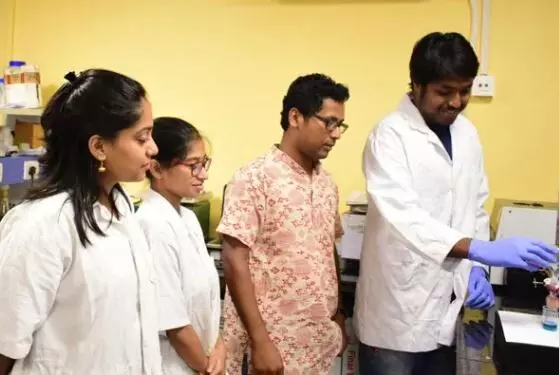IIT-Guwahati Scientists Create Fabric with Oil-Water Separation Ability
Researchers at IIT-Guwahati have unveiled a groundbreaking fabric capable of separating oil from water, offering a potential solution to the pressing issue of marine pollution resulting from oil spills.
image for illustrative purpose

Researchers at IIT-Guwahati have unveiled a groundbreaking fabric capable of separating oil from water, offering a potential solution to the pressing issue of marine pollution resulting from oil spills. The fabric is ingeniously coated with silica nanoparticles and ingeniously crafted from rice husk, an otherwise discarded agricultural byproduct. Vaibhav Goud, a distinguished professor in the IIT-Guwahati's Department of Chemical Engineering, spearheaded this pioneering initiative.
The overarching goal is to transform agricultural waste into a sustainable and value-added product to combat the detrimental effects of marine oil pollution. Oil spills stemming from industrial discharges or accidents inflict irrevocable harm upon aquatic ecosystems. Traditional cleanup methods, such as skimming or in-situ burning, have proven to be ineffective, cost-prohibitive, and, regrettably, sources of additional pollution, as highlighted by Goud, who co-authored a research paper on the subject with Sutapa Das.
Goud emphasized the multifaceted environmental benefits of their technology. Rice husk, a bountiful agricultural byproduct replete with silica, is conventionally disposed of through unscientific burning, which contributes to air pollution. However, their innovative technique ingeniously transforms this neglected rice husk into 3D sorbents capable of mitigating oil contamination via a selective active-filtration process. This process involves gradually heating rice husk to produce bio-char, which is further heated to yield silica nanoparticles.
These treated nanoparticles are ultimately applied as a coating on cotton fabric, resulting in a naturally formed three-dimensional sorbent designed for the separation of oil and water mixtures. The results have been nothing short of remarkable, with the superhydrophobic material exhibiting an astonishing 98 percent efficiency. Remarkably, it maintains its functionality even after repeated use and exposure to harsh environmental conditions, demonstrating its real-world applicability in addressing oil pollution crises.

